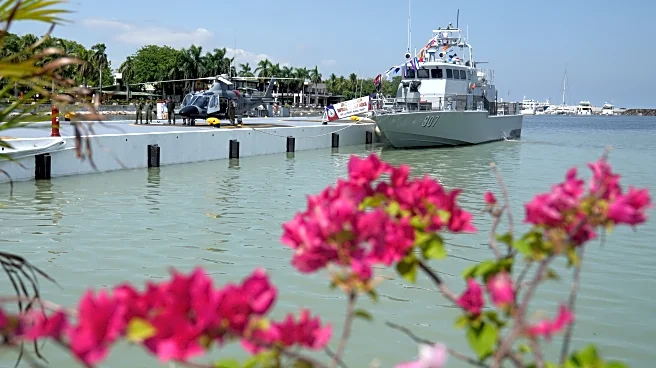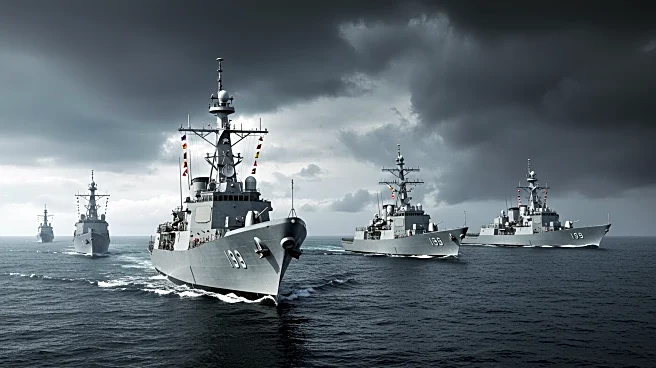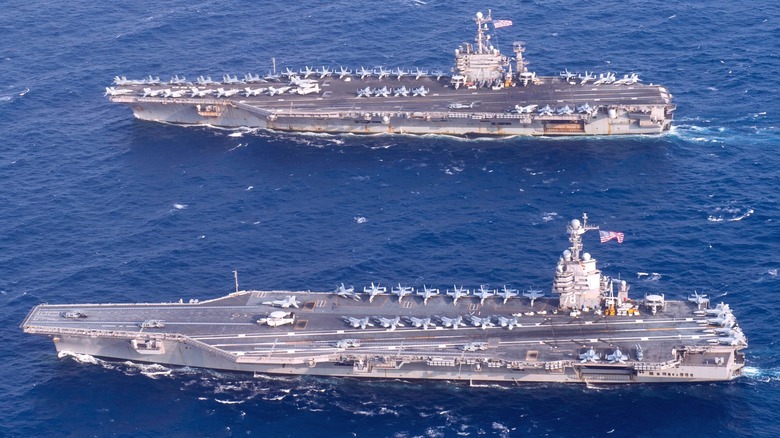
It's almost impossible to consider, but the sinking of a United States Navy aircraft carrier isn't something military planners have discounted. They are, after all, manmade ships, and they aren't indestructible. Still, they are tough to sink, thanks to the large fleet of support and defense ships that make up aircraft carrier strike groups (CSG). These include destroyers, anti-submarine ships, attack submarines, and, of course, the carrier's own air force of F/A-18 Hornets, F-35C Lightning II, and other
aircraft.
Assuming China overcomes all of that and strikes a carrier with torpedoes and/or anti-ship missiles, it's a possibility. However, it isn't an action that China would undertake lightly because a sudden assault and sinking of a carrier would result in direct warfare with the U.S. Their assault would be compared to the Japanese attack on Pearl Harbor, which galvanized the nation in support of joining the already ongoing World War II.
The sinking would almost certainly lead to a larger conflict that could become World War III. It's unlikely to result in any other outcome. China would be prepared for this, though it would probably bite off more than it could chew when attacking the most technologically advanced and well-funded military in the world. Add to that the fact that the U.S. would have 10 more CSGs waiting to enter the fray, there's little doubt that China's sinking of an American aircraft carrier would not end well for them.
Read more: 10 Of The Largest Navies In The World, Ranked By Self-Reported Total Naval Assets
The Immediate Consequences Of Sinking An American Carrier
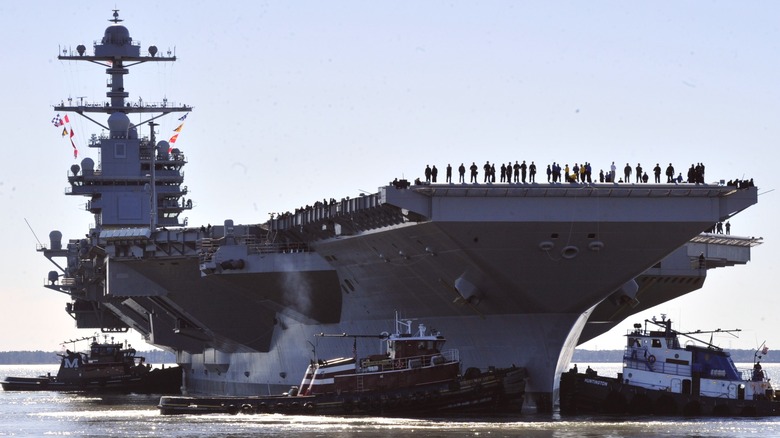
The USS Gerald R. Ford (CVN-78) is the first in her class and the largest warship ever constructed. It boasts many defense systems as well as the aforementioned vessels of its CSG and air force. While a nuclear weapon would likely destroy most of a CSG and its carrier, for this thought experiment, the focus will be on conventional weapons. China has several means at its disposal to strike the Ford, including a plethora of anti-ship missiles and torpedoes, which could conceivably overwhelm the CSG's defensive systems to strike a carrier.
Once hit, it would likely take a long time to actually sink, which was true during WWII, and remains true today. Assuming the vessel sinks, the immediate consequences would be severe. Over 4,500 sailors, aviators, and contractors could be killed in the immediate attack. The loss of life would be the most devastating result, but it's not the only one. The carrier itself cost taxpayers over $13 billion, which doesn't include everything it had equipped onboard, like a 75-plane-strong air force of advanced aircraft.
In the wake of the sinking, any remaining support ships of the CSG would work to recover as many personnel as possible. Depending on how badly the carrier was hit and the number of secondary explosions caused by fuel and other flammable elements, some could be saved. Another concern is the carrier's two A1B nuclear reactors adding radiation to the environment, which the ocean could spread far and wide. The ecological impacts notwithstanding, sinking a U.S. carrier would have drastic repercussions around the world.
WAR!
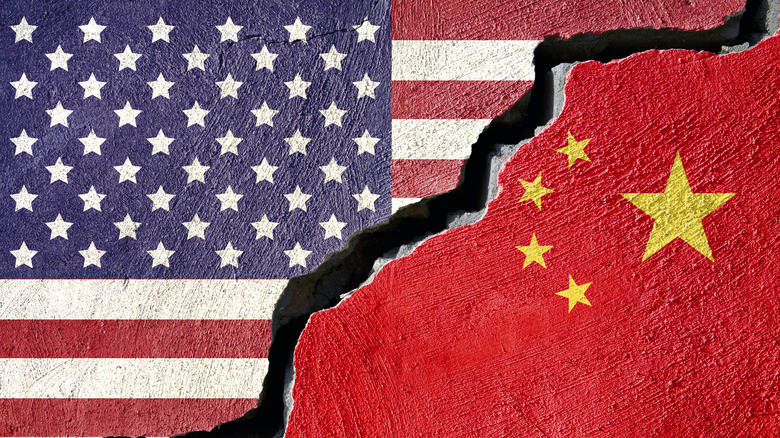
The result would certainly be war between the United States and China, but they wouldn't be alone. The U.S. would draw in every NATO ally. For China, the nation would quickly take Taiwan and other territories it claims throughout the South China Sea. It could potentially find allies in other hostile nations like North Korea, Iran, and potentially Russia. If it escalated to that point, it's World War III.
The U.S. hasn't officially declared war since 1942, but it's likely Congress would take that step, placing the nation in a war economy. Military production would increase drastically, and a new draft wouldn't necessarily be off the table. Conversely, China would do much of the same, committing all of its resources to fighting the collective military might of NATO on multiple fronts. The conflict would likely rage on for several years, and unlike previous world wars, WWIII would see less face-to-face action.
The use of hypersonic missiles by China would certainly see targets destroyed far from any front lines, and the oceans would once more become the tombs for many naval vessels, including aircraft carriers. As of 2025, the U.S. has no defense against hypersonic missiles, nor does it have a ready arsenal of its own missiles. This would likely result in heavy casualties on Western targets during the initial phases of the conflict, but as time progressed, innovation would likely even the odds.
Want the latest in tech and auto trends? Subscribe to our free newsletter for the latest headlines, expert guides, and how-to tips, one email at a time.
Read the original article on SlashGear.



